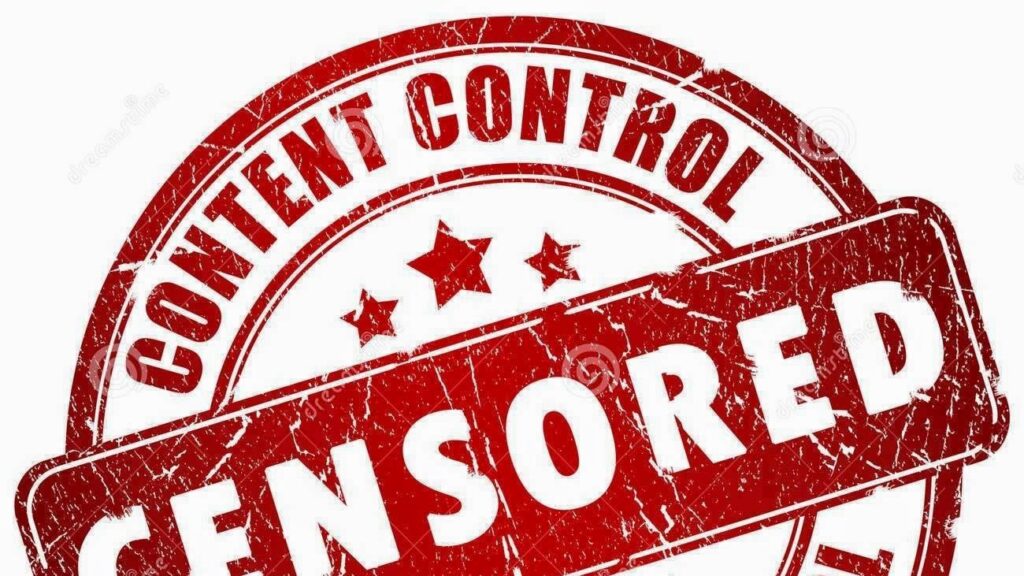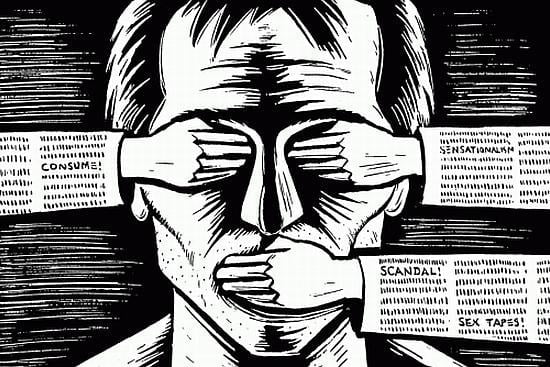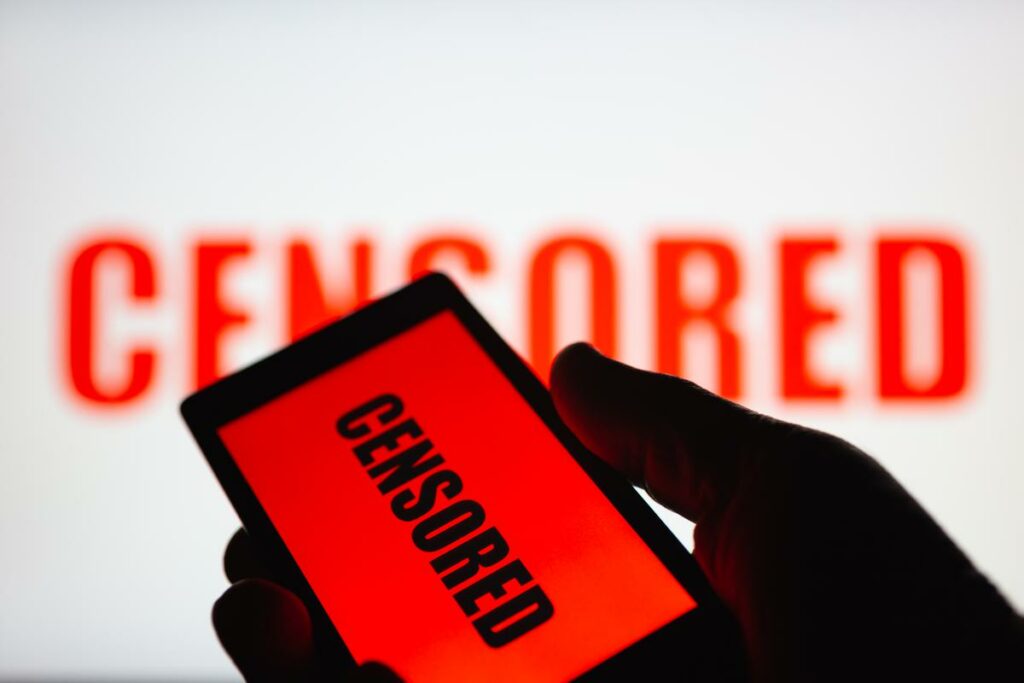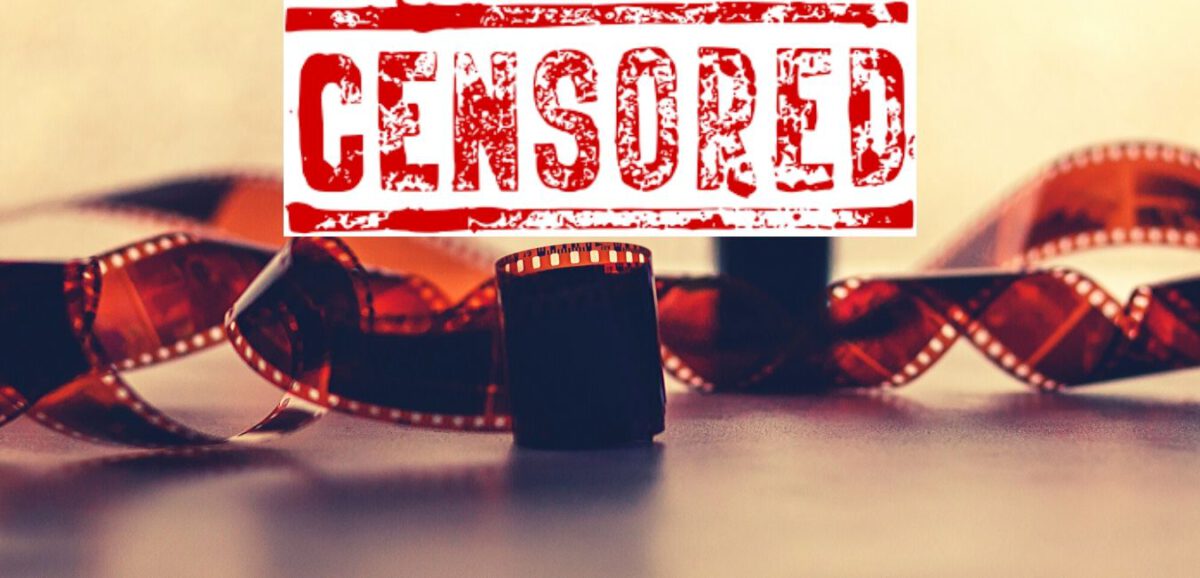Two documentaries were dropped from the Ravenshaw Film Festival, in Cuttack, earlier this month. The films in question were Gay India Matrimony (GIM) by Debalina Majumder and Had-Anhad by Shabnam Virmani. While the first film is a personal and political exploration of marriage as an institution and the desires of the queer community, the latter documents Kabir and his views about Ram. Both GIM, supported by FD, and Had-Anhad had censor board clearance, albeit the latter earned the right for unrestricted public exhibition in 2011 after the High Court cleared the original issues brought up by CBFC. But evidently, the censor board is not the ultimate authority that can grant freedom of expression or exhibition. What is the threat of documentaries and under what threat does this medium currently operate?
“My interest as a filmmaker is in finding my own cinematic truth – that’s what keeps me going and the day I think of self-censoring myself would be the day I’d hang up my boots.”
Sushmit Ghosh
Indian documentary cinema is enjoying its moment under the sun. International recognition, that too the celebrated Academy Awards, always pushes the audience and the authorities to be on their best behaviour, and often blindly. En-masse sorrow flooded social media about All that Breathes losing to Navalny. Some of the aggrieved might have missed that Shaunak Sen’s provocative and poetic film was set against the backdrop of the 2020 Delhi violence and followed two brothers Nadeem Shehzad and Mohammad Saud. A sensitive time and topic for a largely sectarian country – yet there was no notable outcry of offence that so spontaneously flows these days.

The blinders provided by a Western, that too American, attaboy cannot be afforded by more homegrown films. In the weeks of BAFTA, American Guild awards and the Oscars – where the well-deserved documentaries All that Breathes and Elephant Whisperers were collecting praise – a more “vocal for local” outfit Hari Om stalled a film festival at Ravenshaw University in Odisha because the documentaries offended their sensibilities.
Censor board and censorship
Legally, a film cannot be screened at any theatre or television channel without a censor certificate. Certification is also required to apply for any national award or recognition. But it is not mandatory for a film to have censor board clearance if it streams online or is shown in film festivals (unless they specifically require a censor certificate).
“Do you know how documentary films were censored? They used to sandwich documentaries in between feature films. During Mother Courageous I remember waiting outside, hearing the PSBT music – then there was a sound of someone fast-forwarding the film. The 28-minute film was watched in 10 minutes. But it is not the same these days. They do not miss a single scene or a single word. If the film is passed and then causes disturbance – their necks will be on the line.”
Debalina Majumder
Documentaries being an unpopular medium can often forego this step. On matters of official censorship, director of Gay India Matrimony (2022), Debalina Majumder says in a conversation with FII that, “Censor board as I see it is not some force that is throttling us but the current fascist regime’s power is too far-reaching. I have not faced many threats in making GIM but if I try to make a film on the struggles of Jal, Jungle, Jameen – the story will be different. We have seen the trend of incarcerating such personalities – from Soma Sen to Umar Khalid.” The State’s machinery and its powers are scarier than the censor board or official censorship process.

Debalina informed us about the change of pace in the censor board and the act of censorship in recent years. “Do you know how documentary films were censored? They used to sandwich documentaries in between feature films. During Mother Courageous I remember waiting outside, hearing the PSBT music – then there was a sound of someone fast-forwarding the film. The 28-minute film was watched in 10 minutes. But it is not the same these days. They do not miss a single scene or a single word. If the film is passed and then causes disturbance – their necks will be on the line.”
Also Read: Censorship & Political Correctness In The Age Of The Internet
The irony of this story lies in the fact that this niche medium now has a dedicated audience – the censor board. There are newer stoppages set up by the government to hinder documentation. In 2020, it was decided that any film showing or representing the army must obtain permission from the defence ministry. The need to control the national narrative is so imperative that a special unit like the censor board was deemed inadequate.
“Not one censorship, you have to clear the Army censorship.”
Debalina Majumder
“Not one censorship, you have to clear the Army censorship.” Debalina is currently working on a project in Rajasthan where she is repeatedly prodded by the police authorities – wanting to check when they can scrutinise the film. “They might say no! So they will also get to censor the film.” These are newer hurdles propping up in the way of filmmakers. The State even proposed an amendment that provides power to the centre to recall a film that offends a community, reversing decisions made by the censor board.
They banned the showing of BBC’s two-part documentary series India: The Modi Question. Subsequently, protest-screenings at different colleges were violently stopped. For a considerably toothless and mediocre documentary India: The Modi Question at best served as a memory refresher for the Indian citizens who have not been living under a propaganda rock. But the active suppression revealed the government’s fear of information that they deftly hid behind rhetorics of colonialism and hateful Western propaganda.
Director of Indian Predator: The Butcher of Delhi (2022) Ayesha Sood said to FII, “The misuse of archaic laws is also something we need to address – each and every person or organisation can’t claim to have their sentiments offended.” Offending a community has become the easiest feat pulled by a filmmaker today. A documentary filmmaker (Bilal – 2008) and theatre practitioner Sourav Sarangi says, “Hari Om – the name goes to show that there is a religious orientation or agenda. Now, if there is content – literature, music or cinema, that conflicts with a specific ideology – there will be a clash or resistance. It is not new. But these days our idea of nationalism is religious and sectarian – causing disturbances about what someone eats or wears.” Sourav mentioned to FII that the recent news wherein the centre suggested that marriage is a “holy union, a sacrament and a sanskar” exclusive for heterosexual relationships. “Be it Hari Om or any other outfit, they are a reflection of the same institution”.

In a political climate of intolerance and offence, are documentary filmmakers consciously censoring their work? No art is apolitical, especially when its material is real-time footage. But in editing that story the voice of the filmmaker shines through – it decides which parts of the story will see the light of day and which parts remain hidden.
Also Read: Podcast: Is Censorship The Death Of Art? Ft. Nandita Das
FII spoke to the co-director of Oscar nominee Writing with Fire (2021), Sushmit Ghosh, who says, “My interest as a filmmaker is in finding my own cinematic truth – that’s what keeps me going and the day I think of self-censoring myself would be the day I’d hang up my boots.” Yet documenting can often reveal certain sensitive information that might make a vulnerable community open to attacks – especially by majoritarian communities. The gumption of independent documentary filmmakers in India to speak truth to power has built its formidable history – a tradition of dissent and resistance.
Funding documentaries
At the very beginning of this year, this medium has been a thorn in the Modi government’s side. They banned the showing of BBC’s two-part documentary series India: The Modi Question. Subsequently, protest-screenings at different colleges were violently stopped. For a considerably toothless and mediocre documentary India: The Modi Question at best served as a memory refresher for the Indian citizens who have not been living under a propaganda rock. But the active suppression revealed the government’s fear of information that they deftly hid behind rhetorics of colonialism and hateful Western propaganda.

How to curb documentary films without formally installing state-controlled media? There is a pattern of indirect efforts to defund this medium as the government declared at the closing of last year that FD along with three other film bodies was merging into NFDC. Debalina says, “Films by FD or PSBT, some 40 years ago, with almost no budget – are our treasures. Even if FD had funded and then allowed dust to settle on Gay India Matrimony – I still received the help I required at that moment.” That source is uncertain now as NFDC is restructured to incorporate the merged film bodies.
BBC’s documentary has caused a negative ripple in the pool of the State’s insecurity. Debalina indicated that there has been a sudden ire from the government against documentary filmmakers. Institutions like DocEdge (a documentary forum for funding, pitching, distribution etc) have suffered fund-culling. Debalina points out other implicit policies, “Some of my most travelled films were funded by Sappho, an NGO. Shobhit Jain’s films, a fantastic body of work, were funded by SPS (Samaj Pragati Sahayog) – an NGO. But you know what kind of limitations have been levied on NGOs against foreign funding! This was done systematically, and now that source has dried up for us.”
Sourav explains that funding is an investment made in order to earn revenue. “But the exhibition system (for documentaries) is non-existent. So there is no possibility of box office returns. Even televisions do not have any slots anymore – previously available even if one or two. The system is structured in a way that documentary is an unviable proposition for investors.” But the relevance of documentaries as a manner of writing history cannot be devalued. “We have agreed that our tax money will be used to build a nation, and buy weapons – documentaries should be a part of that.” But the current state funding for documentaries is very selective and institutionalised – be it central or state government.

Both the films – All that Breathes and Elephant Whisperers, which made it to the Oscars this year relied heavily on international funding. Stuck between a rock and a hard place – the propagandist state and the capital-centric online platforms – independent filmmakers continue to be the pillar that holds the structure of Indian documentaries.
“I don’t think documentaries are perceived as a huge threat only because the audience isn’t ‘mass’. It would be interesting to see what happens when documentaries achieve critical mass.”
Ayesha Sood
And one of their biggest support is international funding. Sourav says, “Makers who can identify themselves with that, pitch properly, present a local subject to a global audience – they have this option. Like Shaunak’s film did, or even some of my films have.” Talking about All that Breathes, Debalina observed, “Did you notice how, in the end, American money saved the birds?” Maybe it reveals a larger meta-narrative of the endangered and under-funded documentary films in India.
Online streaming and OTT
Ayesha says, “I don’t think documentaries are perceived as a huge threat only because the audience isn’t ‘mass’. It would be interesting to see what happens when documentaries achieve critical mass.” A niche medium is rarely a threat in a country with more than 140 crore population. Sushmit says, “It’s ironic that while Indian documentaries are winning major global accolades over the last few years, most of these titles remain unavailable to watch here.” This is a pertinent question that should be posed to the distribution machinery in India.
“We need to groom a new generation of documentary producers and this can only happen through a combination of industry exposure as well as labs, fellowships and mentorships. Independent filmmakers have been doing their bit, I suppose it’s time for our cousins in the mainstream fiction industry to build models of allyship.”
Sushmit Ghosh
But the story is claimed to be changing with online streaming platforms. Platforms like Netflix and MUBI have actively promoted documentary films and series as content for entertainment. Ayesha says, “It is probably the best time to be a documentary filmmaker, earlier we only had the cinema release as an option and that was virtually unheard of barring a few lucky ones. Today with OTT platforms there is a keen audience and the commissioners see that.” Sourav on the other hand spoke about another facet of online opportunities, “The OTT platforms have hijacked the independence of online streaming through a very capital-centric investment and planning. They do not show all kinds of documentaries. They show what will cater to a created audience.”

The choice is construction on these platforms and there is a gap between the documentary bank that exists in India and what is showcased online. Sushmit says, “We have an intelligent and keen audience in India that wants to watch documentaries. I remember watching Faiza Ahmad Khan’s Supermen of Malegaon at Osian’s in 2009, which ran to packed houses and a cheering crowd. Documentary filmmakers have done the heavy lifting of creative and disruptive distribution. The question is, how many of these films are available on streaming platforms?”
Silver lining and way ahead
There was a signature campaign, by artists from the film fraternity, after the screening of GIM was stalled at Ravenshaw, subsequently, there have been protest-screenings arranged by other universities and academic spaces across the country. “There will be a screening in Bangladesh as well”, Debalina informed. “My friends have been joking with me – how did you make this happen?” Documentaries, a medium often pegged for a niche audience, have been gaining traction because of suppression by State or ancillary voices. Silver lining? “The focus that this film received and the interest it garnered – was definitely a contribution of their (Hari Om) monkey business.” The irony of suppression or prohibition has always been the radically opposite effect – pulling attention to the cause of such hullabaloo. From censor board officials becoming dedicated viewers of documentaries to protest-screening hard-launching niche films – there have been few moments of hilarity in an otherwise bleak circumstance.
Also Read: Lesbian Movement In India: Right-Wing Politics, Censorship And Beyond
When a community is alienated it forms a camaraderie unlike any. Debalina says, “India’s history of documentary cinema, wrought through decades, has been conserved by independent filmmakers.” It is through the community’s network and support, that this medium has thrived through the years – weathering different political tumult and clashes.
The need for documentaries in an age of misinformation and misrepresentation is immediate. But that need brings forth a requirement for funding and better distribution. Sushmit says, “We need to groom a new generation of documentary producers and this can only happen through a combination of industry exposure as well as labs, fellowships and mentorships. Independent filmmakers have been doing their bit, I suppose it’s time for our cousins in the mainstream fiction industry to build models of allyship.” Documentary filmmakers are in no way giving up this medium and with the recent recognition through two fantastic films making international rounds, we can expect a more robust collection of independent voices. Ayesha signed off saying, “We as documentary filmmakers have to find a way, to be honest with our stories and the voice of our characters”.
About the author(s)
She/they is an editor and illustrator from the suburbs of Bengal. A student of literature and cinema, Sohini primarily looks at the world through the political lens of gender. They uprooted herself from their hometown to work for a livelihood, but has always returned to her roots for their most honest and intimate expressions. She finds it difficult to locate themself in the heteronormative matrix and self-admittedly continues to hang in limbo




